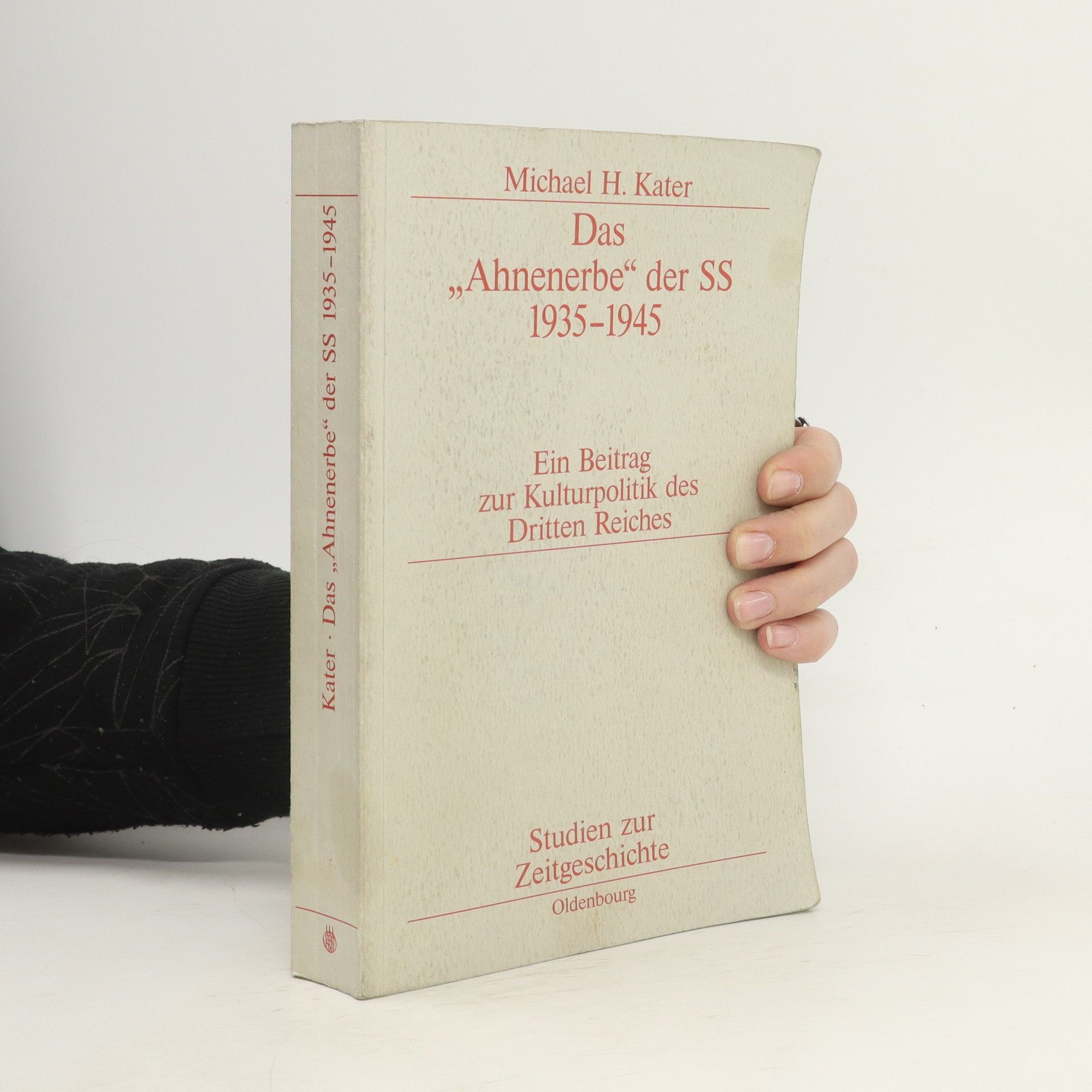A wide-ranging, insightful history of culture in West Germany-from literature, film, and music to theater and the visual arts
Michael H. Kater Book order






- 2023
- 2021
Rekrutacja dzieci w szeregi przesiąkniętych ideologią organizacji politycznych przyjęła najjaskrawszą formę w Hitlerjugend. Organizacja młodzieżowa NSDAP powstała w 1933 roku, tuż po przejęciu władzy w Niemczech przez nazistów. W Hitlerjugend otwarcie wyznawano darwinowską zasadę wyższości najsilniejszych, zachęcano do indywidualnego oraz zbiorowego sadyzmu, fizycznych i psychicznych tortur oraz wszelkich form znęcania się nad rówieśnikiem przez grupę. Przeprowadzano obowiązkowe testy na odwagę, które polegały m.in. na skakaniu z wysokości pięciu metrów do wody – bez względu na umiejętności pływackie, na wspinaczce po stromych ścianach skalnych bez odpowiedniego zabezpieczenia oraz wykonywaniu niekończących się serii przysiadów. W tej książce autor analizuje nazistowskie metody indoktrynowania młodego pokolenia Niemców i manipulowania nimi przez państwo totalitarne. Prezentuje też sylwetki chłopców i dziewcząt, którzy opierali się tym zabiegom. Opisuje, jak Hitlerjugend wstrząsała podstawami tradycyjnej moralności, równocześnie utrzymując, że stoi na jej straży, oraz jak wyglądały odważne – lecz skazane na niepowodzenie – próby sprzeciwu. Podejmuje również refleksję na temat problemów związanych z przejściem członków pokolenia poddanego indoktrynacji na stronę wartości demokratycznych.
- 2021
Der renommierte Zeithistoriker Michael H. Kater schreibt die erste moderne Gesamtschau zu Kunst und Kultur im »Dritten Reich«: Wie die Nationalsozialisten sie bevormundeten und reglementierten; welche Kunst 1933-1945 entstand und welche verboten und vernichtet wurde; wie Kultur als Propaganda eingesetzt wurde. Breit wird das Thema der Entfernung jüdischer Kunst und der Ausgrenzung jüdischer Künstler thematisiert sowie der Bereich der Zwangs-Emigration von jüdischen wie oppositionellen Künstlern. Auch die Rolle der Emigranten, der »inneren Emigranten« wie der vermeintlichen Widerständler nach 1945 wird behandelt. Das längst überfällige Gesamtpanorama der Kultur in einer kulturfeindlichen Zeit und »Pflichtlektüre für alle, die sich für die Nazizeit interessieren« (The Sunday Times).
- 2020
Culture in Nazi Germany
- 472 pages
- 17 hours of reading
A fresh and insightful history of how the German arts-and-letters scene was transformed under the Nazis
- 2006
Das "Ahnenerbe" der SS, 1935-1945
- 540 pages
- 19 hours of reading
Die Schutzstaffel Heinrich Himmlers war während des Dritten Reiches nicht nur ein Instrument totalitärer Macht, sondern unternahm ernsthafte Versuche, das deutsche Kultur- und Geistesleben zu infiltrieren, beeinflusst von Himmlers bizarrer Persönlichkeit. Das SS-Forschungsamt „Ahnenerbe“ entwickelte sich von zunächst harmlos wirkenden geisteswissenschaftlichen Projekten zu einem der gefährlichsten Werkzeuge der nationalsozialistischen Kulturpolitik. Dennoch konnte sich das „Ahnenerbe“ nie zur obersten Kulturbehörde des Dritten Reiches entwickeln und wurde im Prozess der institutionellen Selbstvernichtung innerhalb der SS fast zerrieben. Der Autor beschreibt die SS nicht als monolithisches Gebilde, sondern als ein „Spielfeld parasitärer Kräfte“, die in einem Nebeneinander und Gegeneinander wirkten. Dies reiht sich in die Sichtweise jener Historiker ein, die den Führer-Staat Hitlers als Ausdruck eines auf allen Ebenen wuchernden Machtpluralismus interpretieren, anstatt als eine zielgerichtete Monokratie. Pressestimmen loben die Untersuchung als Standardwerk der NS-Forschung, das durch präzise Personen- und Institutsbeschreibungen sowie ein immenses Quellenstudium besticht. Der erneute Nachdruck bietet nicht nur Einblicke in die Frühzeit der Nationalsozialismusforschung, sondern bleibt auch angesichts neuerer Erkenntnisse von bleibendem Wert.
- 2004
Der dritte Band von Michael Katers Triologie über Musik und Musiker im Dritten Reich widmet sich nach den Interpreten nun den Komponisten. Einige arbeiteten während des Nationalsozialismus in Deutschland, andere gingen ins Exil, die meisten standen in Kontakt miteinander. Exemplarisch beschreibt der kanadische Historiker in diesem Band die Lebensläufe von Werner Egk, Paul Hindemith, Kurt Weill, Karl Amadeus Hartmann, Carl Orff, Hans Pfitzner, Arnold Schönberg und Richard Strauss. Mit diesem Band liegt nun Michael H. Katers Triologie zum Musikgeschehen im Dritten Reich komplett vor. "Die missbrauchte Muse. Musiker im Dritten Reich" ist als Taschenbuch bei Piper und "Gewagtes Spiel. Jazz im Nationalsozialismus" bei dtv lieferbar.
- 2002
Ärzte als Hitlers Helfer
- 576 pages
- 21 hours of reading
- 1998
- 1995
In German. From the back "Der Jazz mit seiner Spontanität. Improvisation und Individualität wurde von den Nazis als eine Bedrohung ihrer Weltanschauung begriffen. zumal vrele der Jazzkünstler Farbige oder Juden waren." Hardbound, 453 pages.



